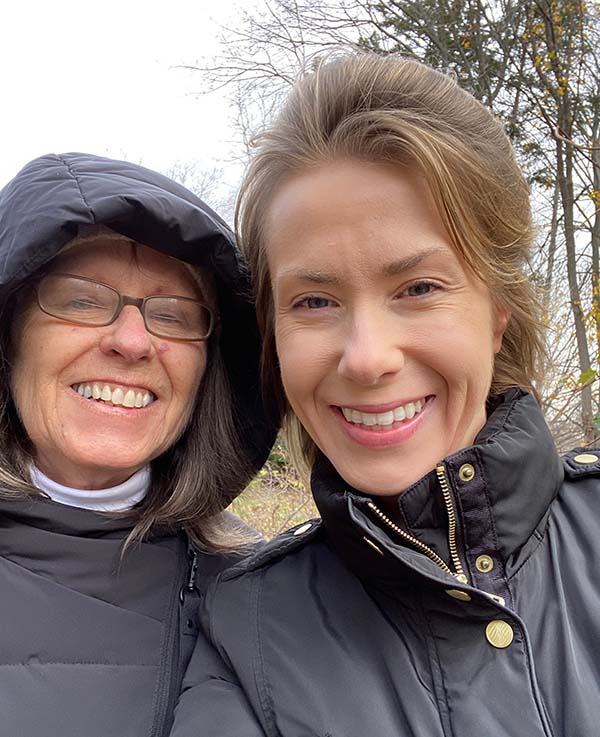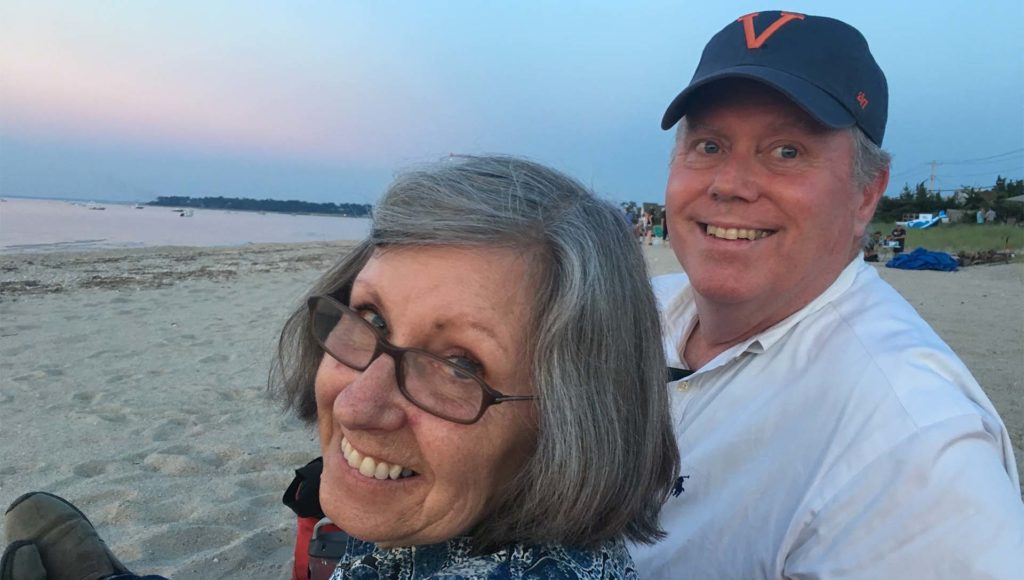
Since 2020, we’ve all been “dying to” live. Dying to see loved ones, go to restaurants, take vacations, escape quarantine. We’ve been longing for the event that will ease our pain. An irreversible, measurable, and tangible event. A finish line.
For some, dying is more literal than figurative.
Dying, in its literal sense, is an active process. It’s a continuous event that asks ― or rather, demands ― fortitude, strength, and grace on the best day. On its worst day, it steals it all from you and the people around you.
Death and dying are quite curious. They sound the same, but they’re actually quite different. Death is not ongoing or continuous. It draws a line in the sand. Before and after. Life and death. But while death lives within one moment, dying can stretch along a track for miles.
I can’t talk from experience about what it’s like to witness a partner, sibling, child, or friend dying of Covid or even cancer. Nor can I talk about the experience of dying myself. But I can share what it’s like to lose a mother far too soon to a disease that has no cure. Living with and caring for her as she’s dying of Alzheimer’s has mystified me, depleted me, and taught me ― all while I’m leading a team and an organization that both need me. My experience of leading through loss is what I’d like to share.
I’m a runner. Particularly a marathon runner. I love running long distances ― it has helped me build stamina and endurance. It has taught me how to look ahead and plan for the hills and valleys, learning when to hold back and when to push forward fast. I’ve considered running a seamless piece of my life. I lose myself to the music to my breathing and focus solely on my journey ― one foot in front of the other.
Being a planner, a big picture thinker, and a structure seeker with a side of optimism, training for a marathon is a dream. 26.2 miles, a predetermined track, and perfectly positioned aid stations. Whew. For me, paradise.
However, my mother’s Alzheimer’s disease unexpectedly enlisted me on a new type of marathon. It’s nothing like the New York City, Boston, or Chicago Marathon. It’s the marathon you’d find after you’ve chased down Alice in Wonderland’s White Rabbit and fallen down the rabbit hole.
Alzheimer’s is not a linear, predictable, or plan-able disease. It mocks homeostasis and sows seeds of chaos in you and your family’s lives. This disease’s grip on my mother has made her curse me, give me the finger, call me every name imaginable, then tell me she loves me deeply and that I’m her best friend. She has stopped walking, swallowing, standing, and remembering me. The behavioral permutations this disease provokes are numerous, yet oddly inevitable. As they happen randomly, inconsistently, and rather unexpectedly, the experience of witnessing them is dizzying.
The finish line of this new marathon moves like a kaleidoscope. At one moment seemingly remote, then abruptly seemingly imminent, and finally seemingly at the other end of a cliff you’re destined to fall off eventually. There are no guarantees you’ll find an aid station when you need it, let alone a fixed track map that will help you expect the next steep hill or long valley. When planning in advance is denied, perpetual adaptation becomes the only way to survive. And let me tell you: constantly adjusting your pace is exhausting beyond what seems possible.
So how do you get through this marathon? How do you navigate caring for a loved one who is dying while you lead an organization?

My search for structure has always been a way to ease the anxiety simmering within me. Voracious learning and reading have been my first defense against the unknown and ambiguous. Knowing helps me conquer the uneasiness. In my relentless albeit sometimes blind search for balance within this tremendously challenging new experience, I have uncovered kernels of truth. Finding others who have been through similar experiences has been a blessing ― and so it seems right to share my discoveries with others as well.
You will constantly second-guess yourself. You’ll try to understand and make sense of why you’re saying X, Y, and Z. Was it because of the emotion surging and coursing through your body? Was it grounded in fact? Was it because of what was going on that day? The harder you try to pinpoint the origin of everything you express, the harder it will be to focus on what others are also trying to express. Find what helps you get out of your head and do it often.
You are going to F-up. You will say the wrong thing. Do the wrong thing. Arrive at meetings late. You’ll be running on empty every day, and something will have to give. Don’t sweat the small stuff, and encourage your team not to sweat it either. Your energy should not be burned up on trivial mistakes. Recognize your imperfect nature and ease into it. When you mess up, acknowledge it, mend it, and keep going.
Telling your team about what you’re going through can go a long way. When you open up to your team, you’ll spend less time managing your emotions and trying to quell your pain at work, and you’ll have more time to collaborate with them to achieve extraordinary and beautiful things. At TalentED Advisors, my team has allowed me to lean on them. By coming as my whole self ― struggles and all ― my team has become stronger. Knowing that they can also show up as their true selves, my team feels safe at work. Not only is feeling safe at work non-negotiable for us, but it has also boosted our creativity and innovation. Sharing our vulnerability has had a direct, positive effect on our bottom line. Authentic is the new professional.
You’re going to have to lean into your strengths. If you’re a planner, then plan. If you’re creative, then create. If you’re a big picture thinker, then strategize. Don’t shy away from your strengths; they will give you joy and fill your tank a little above empty. They might not necessarily align with the process of dying, which requires adaptation and ambiguity. Precisely for this reason, doing something you are naturally great at will give you some sense of control, structure, and predictability ― it’ll provide you with fortitude.
It’s not the right time to learn something new ― stick with what you know and conserve energy. Postpone learning that new language, new skill, or new software. If it can wait, let it wait. You must prioritize what is essential. Eventually, when your energy levels are up, you’ll be able to pick it up with new vigor and enthusiasm.
Make time to process. Especially because dying is not like death ― in that it’s not confined to a certain moment ― your psychological and emotional wounds will take a hit every day for many days. The healing that begins one day will be erased the next. There will be times when you digest so much at once that it feels unbearable; there will be other times when you barely feel at all. Regardless of your endless to-do list, carve out some time each day to give yourself the space to process and reflect on each new part of this new normal. Otherwise, your body will make you.
You’re going to have to plan, re-plan, and then plan yet again. Remember, this is not just any marathon that requires strength, endurance, and stamina. This is the marathon beyond the rabbit hole, and this marathon will require you to make peace with uncertainty, ambiguity, and adaptation. New challenges will surface while you’re still working on three others, and new pathways and options will appear out of thin air.
You’ll rediscover yourself 10 times over and realize there is no one way to navigate dying. When you think you’re finally doing all the “right things” ― Wham! You’ll crash into a new wall and feel hopeless, writhing in pain. You’ll feel this marathon is a fool’s errand, and you might even consider turning in your sneakers. For this, the best approach is the simplest. Take it one day at a time — one foot in front of the other.
For those navigating loss, know that you are not alone. The unimaginable circumstances you’re experiencing are not permanent. You ― we ― will get through. Who we will be when we emerge from these experiences is unclear, but I hope we emerge as fuller humans ― full of sorrow and pain but also full of hope and love.
Let loss be our invitation to reckon with our flawed humanity. As leaders and as humans, let us not strive for perfection. Let us show up with honesty, embracing our struggles with courage and heart.
For now, stock up on tissues. No one tells you you will go through so many. In fact, consider a stock option.







